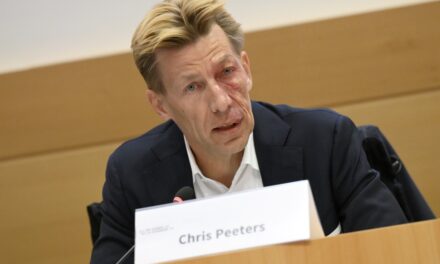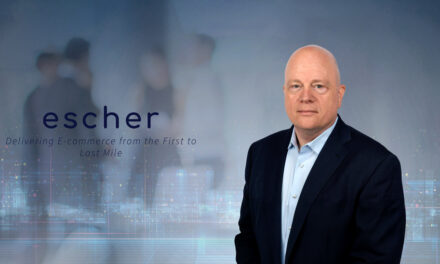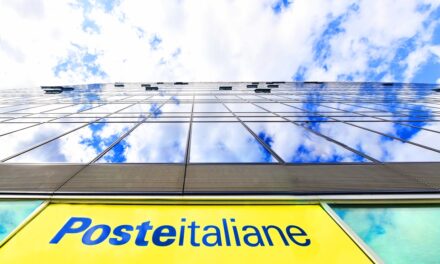
Interview with Jeremy Folkes, Escher Group

Ahead of the World Mail & Express Europe (WMX Europe) Conference in Dublin, we caught up with Jeremy Folkes, Chief Product Officer of Escher Group. Jeremy will be speaking at WMX Europe 2019 and offers his thoughts on the conference and the future of the industry.
P&P – Tell us a little bit about yourself and your company.
JF – I’d be happy to. My name is Jeremy Folkes and I’m the Chief Product Officer at Escher Group. I’ve been in the postal technology business for over 30 years, beginning with the UK Post Office in 1987. At the UK Post Office, I gained an appreciation and an extensive understanding of counter automation technology, having been involved in a number of major initiatives at the organization. My passion there ultimately led me to Escher in 2000 and to the Vice President of Professional Services role working very closely with Escher’s clients, and then subsequently moving to being CTO. In my current position as CPO, my main focus is driving the strategic direction for all of Escher’s products.
During my early days, Escher built a great reputation in the postal industry as the experts in customer point-of-service solutions, but we’ve expanded the capabilities of the product platform considerably since then. Today, Escher’s purpose-built customer engagement platform is empowering posts to profitably engage customers anywhere, anytime – not just at counters. When I look across the company today, our collective knowledge and domain expertise across all our employees has grown tremendously over time. No other vendor in the world has the experience, knowledge, or technical expertise in providing counter, kiosk, or mobile customer engagement solutions for postal operators. It’s impressive when you sit back and consider how far Escher has come since its early beginnings.
Today, with our purpose-built customer engagement platform, Escher has guided 35 posts around the globe through their digital transformation journey, helping them grow their revenue, change their cost model, and improve customer satisfaction levels.
P&P – What will you be speaking about at WMX Europe this year?
JF – The topic I’ll be speaking on is “Using the Last Mile to Create Wins for Customers, Posts, and Retailers”. As you know, the recent explosion in ecommerce has been driving the parcels business in post offices around the world, but with this opportunity has come some challenges. When posts are unable to deliver the parcel into the hands of the customer on the first attempt, the parcel is then taken to the post office (or sorting office), and awaits collection by the customer. However, due to office hours or distance from the customer, this location can be inconvenient and the parcel sits for longer than it really should, creating storage challenges for the post office. Not only does this lead to a poor customer experience, but most post offices simply do not have the storage capacity for these parcels.
The solution that I’ll be describing at WMX Europe, is to solve this last mile challenge with Pick Up Drop Off (PUDO) locations, such as existing retail or convenience stores. Leveraging PUDO locations is a cost-effective and fast way for a post to expand their retail network.
This approach allows the post to be nearer to their customers and provides a convenient location for customers to pick up their parcel. Since the customer is not required to travel a greater distance to a central post office or sorting office and because of the longer operating hours, parcels are picked up quickly, greatly improving the overall customer experience. Storage challenges at the post or sorting office are also eliminated. Furthermore, PUDO locations benefit as well from the additional footfall to their retail or convenience store. Escher’s PUDO technology can assist with this, and I’ll be sharing a real-life case study of how a major post in Europe was able to successfully roll out this solution.
P&P – What do you hope our delegates will take away from your presentation?
JF – The last mile challenge is very real and something many posts – and consumers alike – are frustrated with. My hope is that delegates will first and foremost gain a better understanding of how they too can solve the last mile challenge using this low cost, proven approach which is quick to roll out and can work alongside other last mile solutions like parcel lockers. Secondly, delegates will understand how PUDO technology works and how once in place, it can be used to add other complementary services. Thirdly, it’s important that delegates see the true value created by such a solution. For the posts, this move to a variable cost structure reduces overall costs, customer satisfaction greatly improves, and retailers gain additional service revenue and footfall.
P&P – How can we advance the post and parcel industry?
JF – A few ideas come to mind, but a greater focus on the postal operator’s retail locations would be an excellent place to begin. Consider that posts operate extremely large retail networks. In some countries, posts have more retail locations than the top four to five largest retailers or banks combined. That represents a massive opportunity for posts.
By leveraging their existing retail network, building out this network by adding PUDO locations and through an agency or franchise model, expanding core postal service offerings, and adding complementary services outside of their core business (such as money transfers or eTopups to name a few), posts can maximise revenue potential. To achieve this, an investment in a modern POS platform is required. The POS platform must offer flexibility and allow posts to quickly add and support new services and transactions, including complex transactions if needed.
In terms of cost savings, growing their presence through the addition of PUDO locations and through an agency or franchise model, posts move away from a fixed to a variable cost model, freeing capital, and lowering overall risk. Adding retail presence this way is a great way to be nearer to the customers.
A modern POS platform can also help posts extend services to mobile and kiosk as well, further amplifying costs savings, revenue, and customer experience enhancements.
P&P – How has the post and parcel industry changed in the past 5 years? What do you predict will happen in the next 5 to 10 years?
JF – The last five years have seen posts extending their engagement with today’s digital-first customers. Some are moving from a single channel (retail counter solutions) to encompass multiple channels such as with kiosk mobilePOS, and PUDO locations.
P&P – What is the biggest challenge in the post and parcel industry at the moment?
JF – Urgency is the greatest challenge postal operators face. The increased volume of parcels and packages fuelled by ecommerce, and the desire for a customer-first strategy, has created a real sense of urgency and requirement to have a solution which expands and deepens points of engagement across all channels, in place now – not in the next five years.
P&P – What are the most critical changes that we must make to face the future effectively?
JF – In this time of rapid change, it will be important to make out-of-the-box thinking a priority in order to be dynamic and quick to respond. As posts continue on their path of innovation, adopt a customer-first strategy, and expand points of engagement, this shift in mindset will help everyone face the future effectively.
P&P – How can postal organisations adapt in the face of falling mail volumes? Can they really compete with new industry disruptors and faster moving global operators?
JF – Posts can adapt in this environment of lower revenues attributed to the decline in letter mail, but some investments will be necessary. Even if parcel and package volumes are increasing, those posts who are still working under a pre-digital operating model will be unable to realize this full benefit. Those posts who have not undergone a digital transformation might feel constrained by an IT infrastructure that doesn’t easily allow them add new channels, services, modes of engagement, or new physical locations as ways to reduce costs, grow their revenues, and improve the customer experience. However, this situation can be addressed, and posts can move closer to operating on a level playing field with the competition. A modern customer engagement platform for posts can help them move towards a variable cost model, easily add new services, and engage with their customers at a much deeper level.
Jeremy will be speaking at the World Mail & Express Europe Conference 2019. WMX Europe is taking place at Croke Park in Dublin (17 – 19 June 2019). Visit www.wmxeurope.com for more information.










